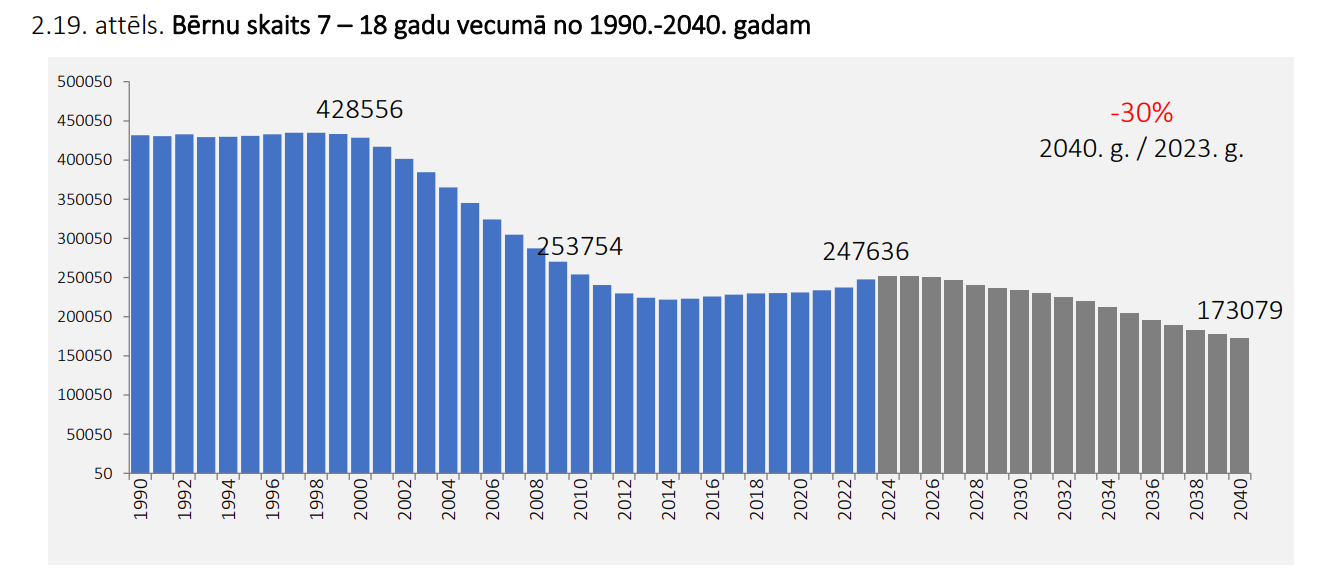At the beginning of summer, the Ministry presented its offer to rearrange the school network, as is customary, sparking confrontations. Ministry officials now say that the Ministry would continue talks with local governments, but that a map of changes would no longer be drawn or made public. The plan would cover the period from 2024 to 2028.
According to the Ministry, there is no need to publish the map because the final decision on closing or reorganizing schools will be taken by local governments.
However, Inga Vanaga, head of the Education and Science Workers' Union (LIZDA), believes that the overall map of the school network, whether as an image or list, is very important in order to have clarity about how accessible the educational institutions will be and where students will go if a school is closed or 'optimized'.
Ināra Dundure, counselor for education of the Latvian Association of Local and Regional Governments (LPS), agreed that if the government backs the Ministry's report on the school network next week, it will not provide answers to parents, pupils, and educators whether it affects their school.
“Right now, that briefing doesn't give an answer as to what it's going to look like. I think the Ministry should fairly inform the public. And after negotiations with local governments, it is necessary to create a map of how it will all look in the future,” the LPS representative said.
The Ministry, for its part, explained that it will be the responsibility of the local government – to make decisions and inform its residents about them. The Ministry's representative Edīte Kanaviņa said that, according to IZM estimates, there are “as a minimum 60 educational establishments where it should be assessed whether they continue to work, and with that, we need to look at how we and the local governments work together to provide funding for the pay of a teacher in these educational institutions”.
In preparing its report on the school network, the IZM also assessed pupil learning performance, pupil and educator well-being, and concluded that the exam results highlight the differences between cities and rural regions. IZM pointed out that there is a similar tendency – children from Rīga or other cities show higher performance in exams and children in rural areas have lower performance.
Recent years have seen an increase in pupils, but this is temporary. Forecasts from Eurostat show that the number of children at school age (7-18) will start to decline again in 2025, the draft IZM report said. The number of school-aged children may drop by more than 30% by 2040, and with demographic projections, the number of educational institutions will also need to be reduced in the future, the Ministry said.

Photo: IZM
The average number of pupils in an educational institution is lowest in rural areas (considering all school types, an average of 230 per educational institution) and the highest in cities (an average of 726 pupils per educational institution, respectively).
On average, primary school teachers working in rural areas have the lowest workload. In rural areas, in a large number of educational institutions, more than 50% of teachers only teach as a secondary job, which, according to the Ministry, may have a negative impact on the quality of education.
The data show that at the same time, there is a significant labor shortage in the sector – 417 vacancies for teachers were registered at the general primary and general secondary education stage as of June 8, 2023, which is 2.3% of the total number of teachers' workloads.
The average age of teachers is also a high risk for the sector, the Ministry estimates. At the beginning of the school year 2022/2023, 8% of teachers in general education institutions were over 64 years of age, 29% of teachers were between 55 and 64 years of age and only 3% of teachers were under 24 years of age.



























